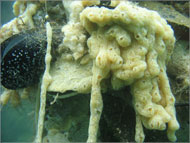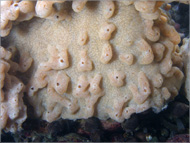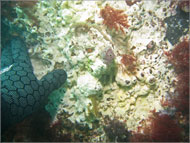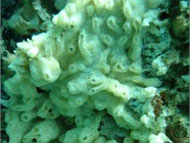Natural distribution & biology
Habitat: D. vexillum typically grows on fully submerged hard surfaces and seems to have a preference for artificial structures such as wharfs, pilings and boat hulls. It can tolerate a wide range of temperatures (as low as -2°C and greater than 24°C), but generally requires temperatures above 13°C to reproduce.
Reproduction and dispersal: Like all sea squirts, D. vexillum is a hermaphrodite, meaning it contains male and female reproductive organs. Internally fertilised eggs are brooded and develop into larvae (sometimes called tadpoles because of their small tails) before they are released. Most larvae remain in the water for 2-6 hours before settling on hard structures, but larvae have the potential to survive for up to 36 hours before settling. This sea squirt is also capable of asexual reproduction, whereby small pieces can break off and re-attach to suitable substrates to form new colonies.
How can you help?
If you see this pest in NSW, please report it immediately
- Note the exact location
- If possible take a photo and/or collect a sample
- Freeze sample in a plastic bag
- Report your sighting



